The ancient Mayan city of Chichen Itza has an amazing history of over a thousand years. It is the second most visited archaeological site in Mexico, a UNESCO World Heritage Site and one of the Seven New Wonders of the World.
Chichen Itza is located on Mexico’s Yucatán Peninsula, not far from Cancún, and that’s one of the reasons why millions of people visit these Mayan ruins every year.
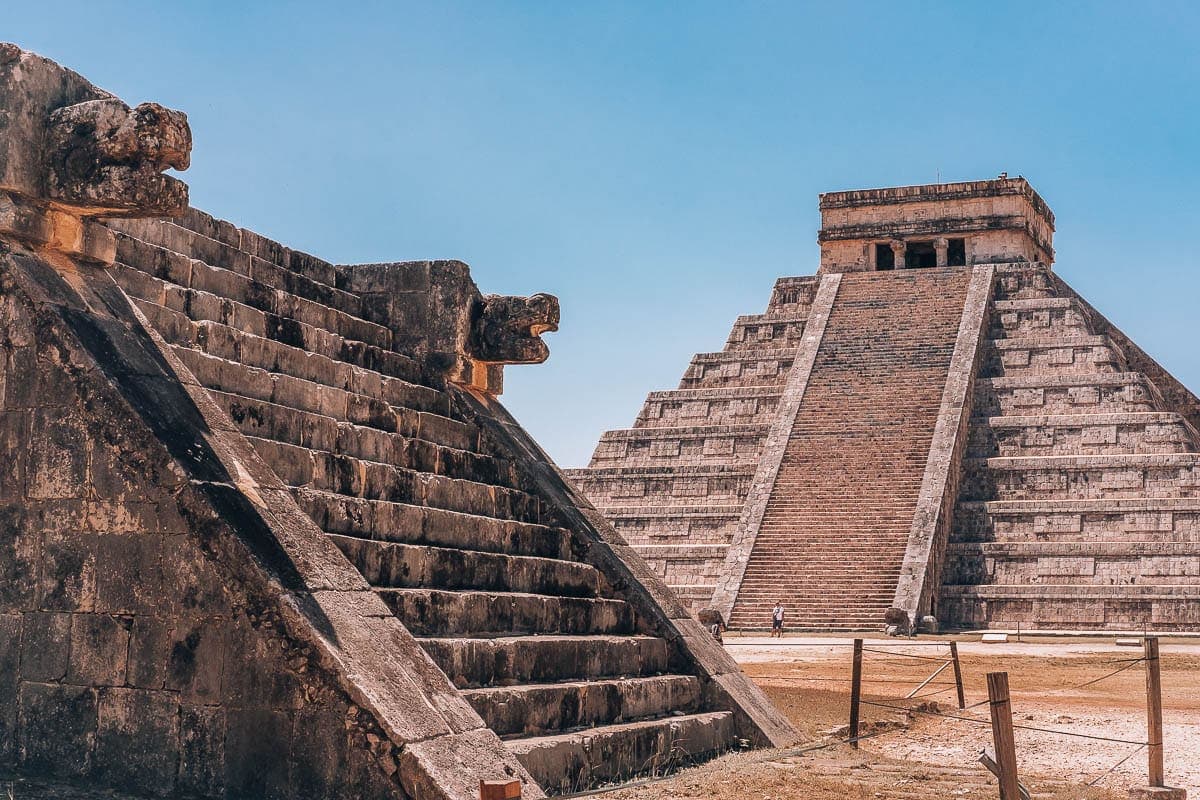
History of Chichen Itza
Not much is known about the history of the town, but one thing is certain. When the first Spanish explorers arrived on the Yucatán Peninsula in the fifteenth century, the town of Chichen Itza had long been abandoned. Historians have come up with several theories as to why this was so. Chichen Itza is not the only city from which its inhabitants have disappeared. The entire Mayan civilization died in a similar fashion.
One theory is that the Maya were simply too numerous and exhausted the available natural resources. There could also have been a catastrophe in the form of a major drought or epidemic.
Moreover, the various city-states were in constant competition with each other – Mayan cities are full of scenes of wars and bloody battles. In any case, Chichen Itza is one of the best preserved cities left from the Mayan civilization.
Pyramid of Kukulkan – El Castillo
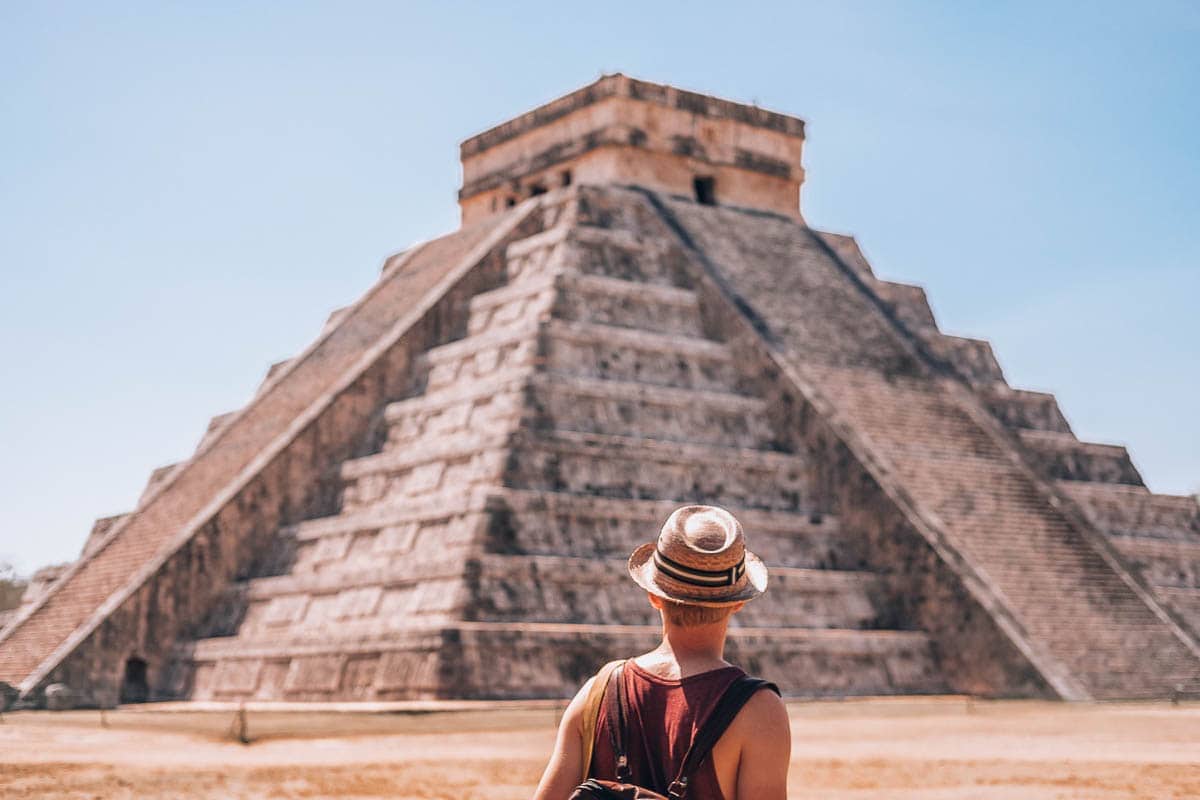
The most famous and most photographed structure of the complex is the Pyramid of Kukulkan, which shows signs of highly sophisticated builders who used advanced mathematics. The pyramid is built on a square plan, 91 steps lead to the top and on the days of the equinox the setting sun casts a shadow that makes the snake statues on the pyramid seem to come to life. Their shadows crawl vertically down the pyramid, creating the illusion of snakes.
One staircase leads from each side to the top and each staircase represents one side of the world. There are 365 steps on the pyramid, the same number of days on the Mayan solar calendar.
Thanks to 3D scanning technology, archaeologists have discovered that there are two more pyramids inside. So the new rulers probably had a new pyramid built on top of the old one.
Temple of the Warrior
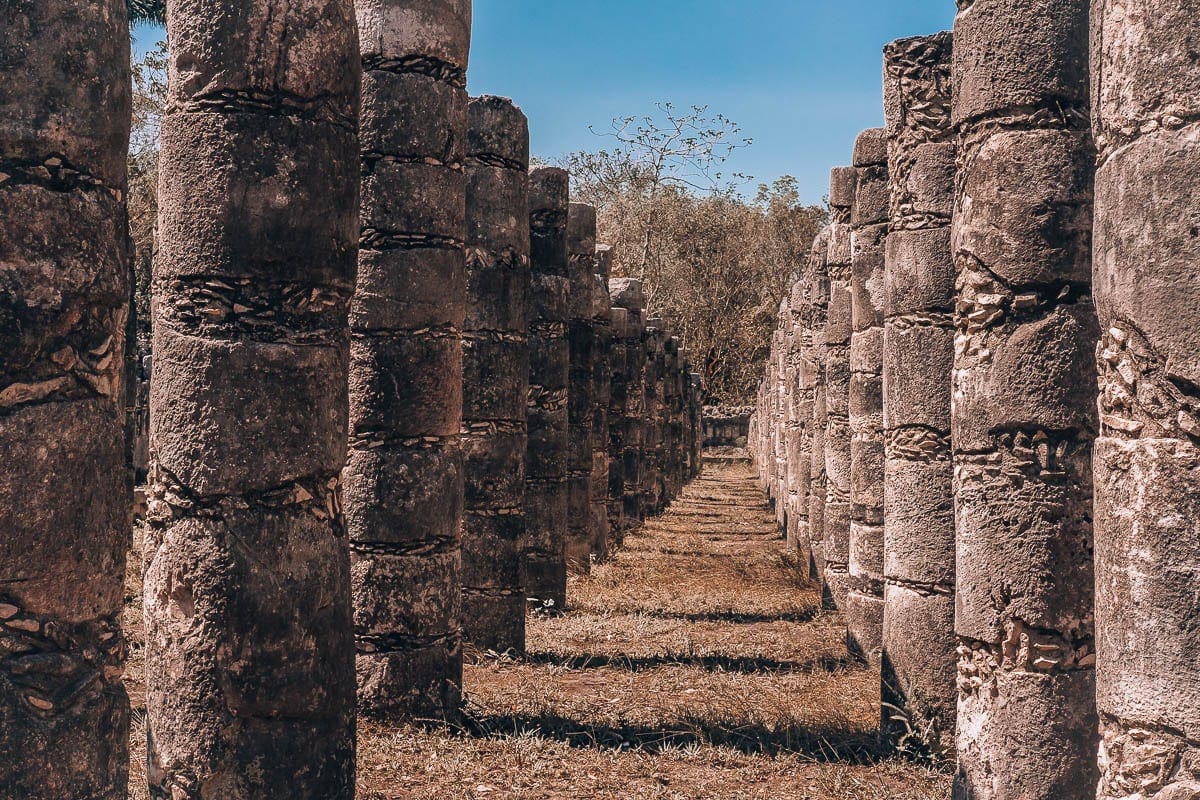
The Temple of the Warriors is a large building, of which only about 200 columns remain, which probably supported the roof, which was made of a different material. The temple is also known as the Hall of the Thousand Columns and was probably an area for religious gatherings or a marketplace.
Along the staircase you will see statues holding bowls, which were probably used in religious rituals. The Mayans could fill them with tobacco, tortillas, or whatever was appropriate to sacrifice to the gods.
Playground at Tlachtli

To the left of the main pyramid you will find the Mayan ball game field Tlachtli, which is the largest Mayan ball field found in the world so far.
According to engravings and other fragments, it is believed that two teams played against each other and their task was to throw a rubber ball through a hoop placed high above their heads.
This would be no big deal if they weren’t forbidden to use their hands and feet.
The game itself is over 3,500 years old and has been played in various variations for many centuries. In the case of the Maya, it was a religious ritual where the captain or the entire team (it is not clear whether the winners or the losers) were sacrificed to the gods in a nearby natural well – the cenote – at the end of the game.
Well of Sacrifice – Cenote De Los Sacrificios
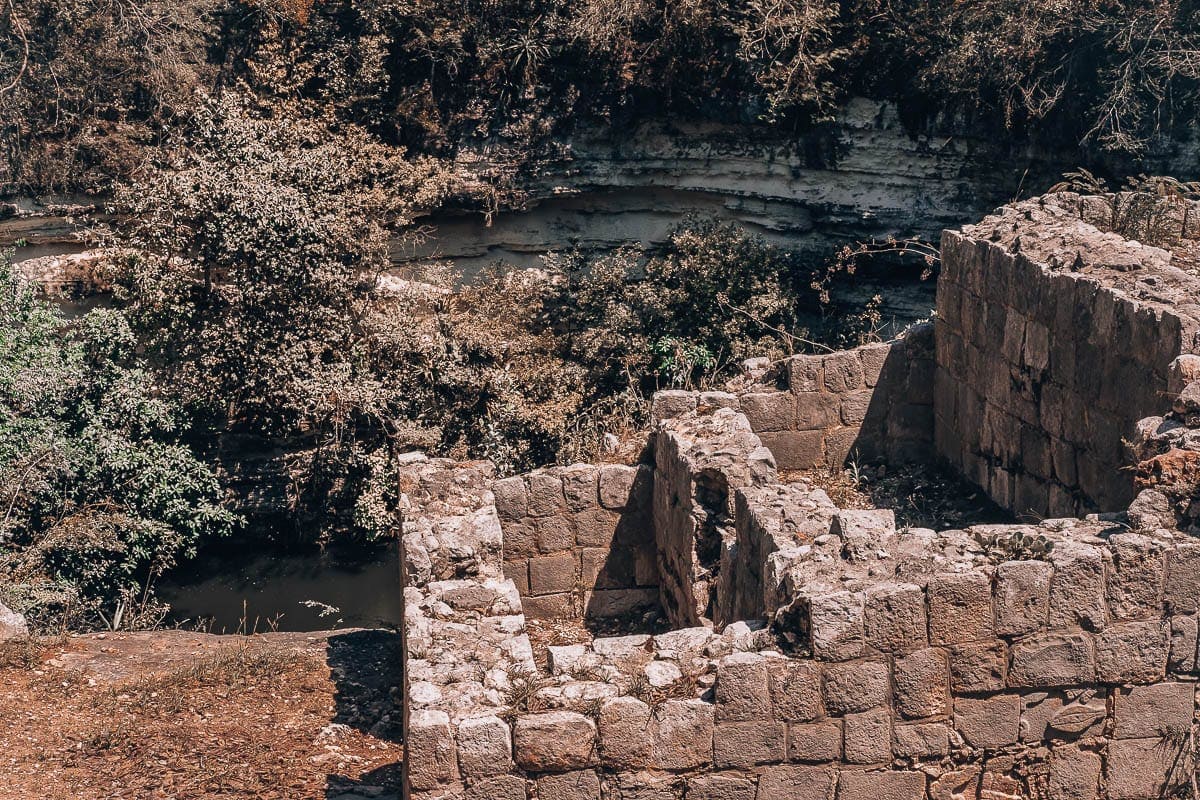
Natural wells used to be the only available source of drinking water, and the Maya held them in sacred respect. Many historians believe that the city of Chichen Itza was built here because of the existence of the Well of Sacrifice.
During long dry periods, the Maya would throw many objects into the well, including the remains of sacrificed Maya, to curry favor with the rain god Chac.
While exploring the underground lake, divers discovered thousands of artifacts made of gold, copper and kidney stone, and of course a number of human skeletons showing signs of decapitation.
Observatory – El Caracol

Another interesting building is the so-called. Observatory, whose roof is dome-shaped and not fully enclosed. It was probably used by Mayan astrologers for stargazing.
But the Maya had no glass, so they did not own any telescopes and made all their discoveries with the naked eye.
Tzompantli – wall of skulls
This platform, surrounded by skulls, was used to pile decapitated heads into large piles. The victims were enemies defeated in battle or prisoners sacrificed to the gods.
The adjacent House of the Eagles building, which depicts eagles and jaguars clutching human hearts, has a similar motif.
Swimming in the surrounding Cenotes
You can’t swim directly in Chichen Itza, but you can go to one of the adjacent cenotes.
The nearest is cenote Ik Kil , but count on a high number of tourists, because agencies often offer to visit Chichen Itza and Ik Kil together. We therefore recommend heading towards the city of Valladolid and trying one of the lesser known cenotes: Zaci or Dzitnup.
Tips for visiting Chichen Itza
- The entrance fee will cost you about 600 CZK, please bring enough cash (only part of the price can be paid by card)
- Arrive as soon as possible, buses full of tourists start arriving at 9:30
- Equip yourself with a good quality sunscreen, hat and water for the tour
- Ignore the trekking vendors, they offer overpriced souvenirs that you can buy in any major city for half the price, but if you forget your headgear, invest in a hat instead
- Every guidebook says something a little different, so take the information with a grain of salt, generally speaking, not much is really known about the Maya and the detailed descriptions of religious ceremonies are more of a fairy tale for tourists
- The restaurants around the entrance are overpriced and not worth it, take a snack with you and go to the village of Piste or the town of Valladolid for lunch
- Don’t park along the road, park directly in the reserved parking lot in front of the entrance, it is guarded and you don’t have to worry about your rental car being scraped off.
Excursions to Chichen Itza
If you prefer to go with a group and don’t want to worry about anything, we recommend going on a day trip with one of the local companies. They usually pick you up at the hotel
Map of Chichen Itza
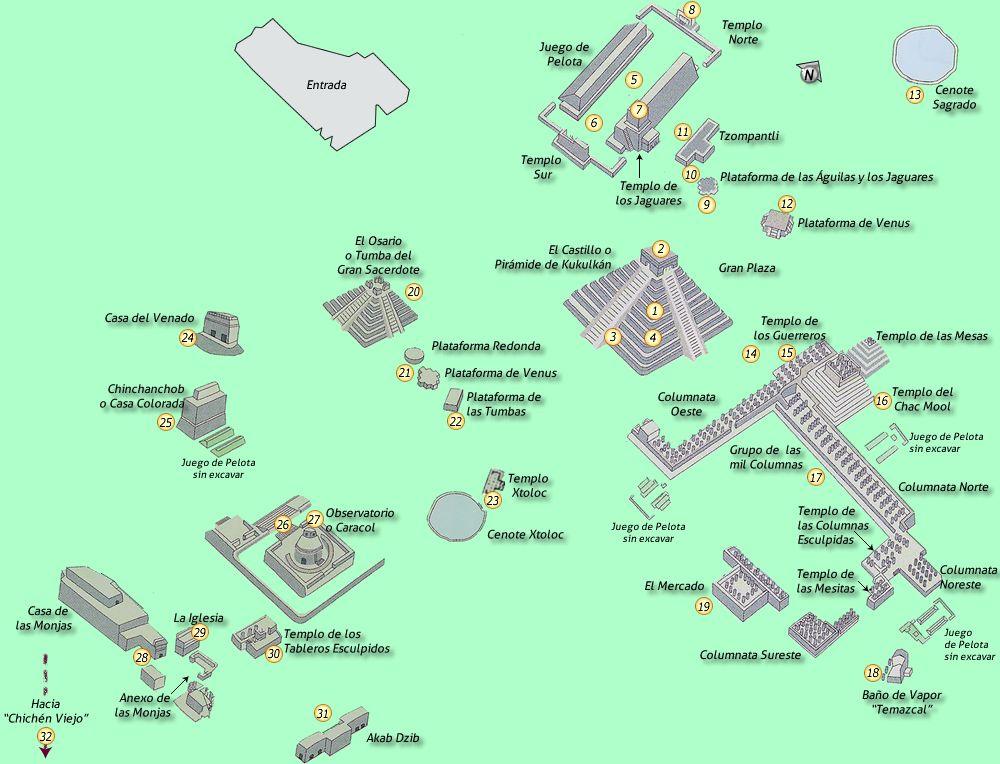
How to get to Chichen Itza
By car
If you’re planning to rent a car, there are some tips on where to go to get one at the end of this article. Here are the distances to the nearest towns where you are likely to stay.
- CANCUN – Chichen Itza is 197 km (two and a half hours) from Cancun by car.
- PLAYA DEL CARMEN – Chichen Itza is 181 km (2 hours) from Playa del Carmen by car.
- MERIDA – Chichen Itza is 119 km (one and a half hours) from Merida by car.
- VALLADOLID – Chichen Itza is 45 km (45 minutes) from Valladolid by car.
By bus
Mexican buses ADO will take you from Cancun in three hours and one trip will cost you 336 pesos (405 CZK). ADO also runs from Valladolid, the journey takes 50 minutes and you pay around 100 CZK one way.
Colectivos
A cheaper option are the Colectivos minibuses, which leave every ten minutes from Cancún and Valladolid. In most cases, you’ll pay about half the price of an ADO bus ticket.
Tips and tricks for travelling in the Yucatán
What to packTake a look at our travel packing guide to help you prepare. Choose the right travel backpack, check out the travel gadgets and don’t forget anything important at home. Where to get ticketsSearch for cheap airline tickets at Kiwi , they’re our favourite portal. Be sure to read our instructions how to get cheap airline tickets. Car rentalWe commonly use a grader RentalCars.com to help us choose a car provider. In Playa del Carmen try writing to the web everythingplayadelcarmen.org , Sergio will take care of you. Reservation of accommodationBooking.com is our most popular hotel search engine. We always compare hotels with local apartments and rooms on Airbnb ( 725 CZK discount ). Read, how we find cheap accommodation . Don’t forget about insuranceTravel insurance is an absolute must. For shorter journeys, choose AXA ( 50% discount ) and for longer journeys the British insurer True Traveller . Take a look at comparison of all insurance companies and choose the one that suits you best. Recommended Lonely Planet Yucatanguide |
Tips and Tricks for Your Vacation
Don’t Overpay for Flights
Search for flights on Kayak. It’s our favorite search engine because it scans the websites of all airlines and always finds the cheapest connection.
Book Your Accommodation Smartly
The best experiences we’ve had when looking for accommodation (from Alaska to Morocco) are with Booking.com, where hotels, apartments, and entire houses are usually the cheapest and most widely available.
Don’t Forget Travel Insurance
Good travel insurance will protect you against illness, accidents, theft, or flight cancellations. We’ve had a few hospital visits abroad, so we know how important it is to have proper insurance arranged.
Where we insure ourselves: SafetyWing (best for everyone) and TrueTraveller (for extra-long trips).
Why don’t we recommend any Czech insurance company? Because they have too many restrictions. They set limits on the number of days abroad, travel insurance via a credit card often requires you to pay medical expenses only with that card, and they frequently limit the number of returns to the Czech Republic.
Find the Best Experiences
Get Your Guide is a huge online marketplace where you can book guided walks, trips, skip-the-line tickets, tours, and much more. We always find some extra fun there!
